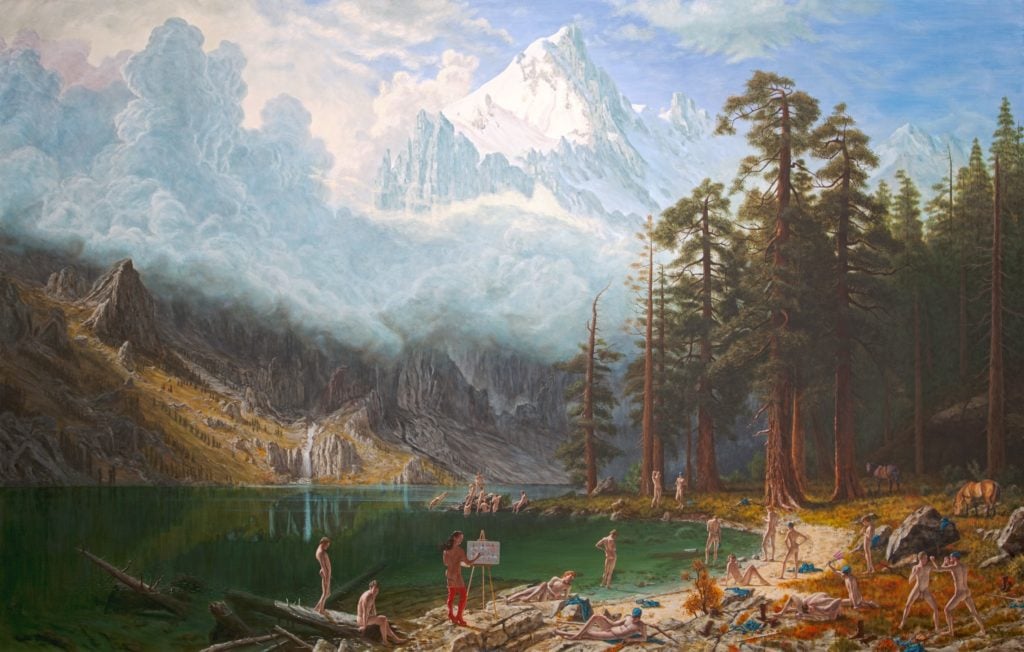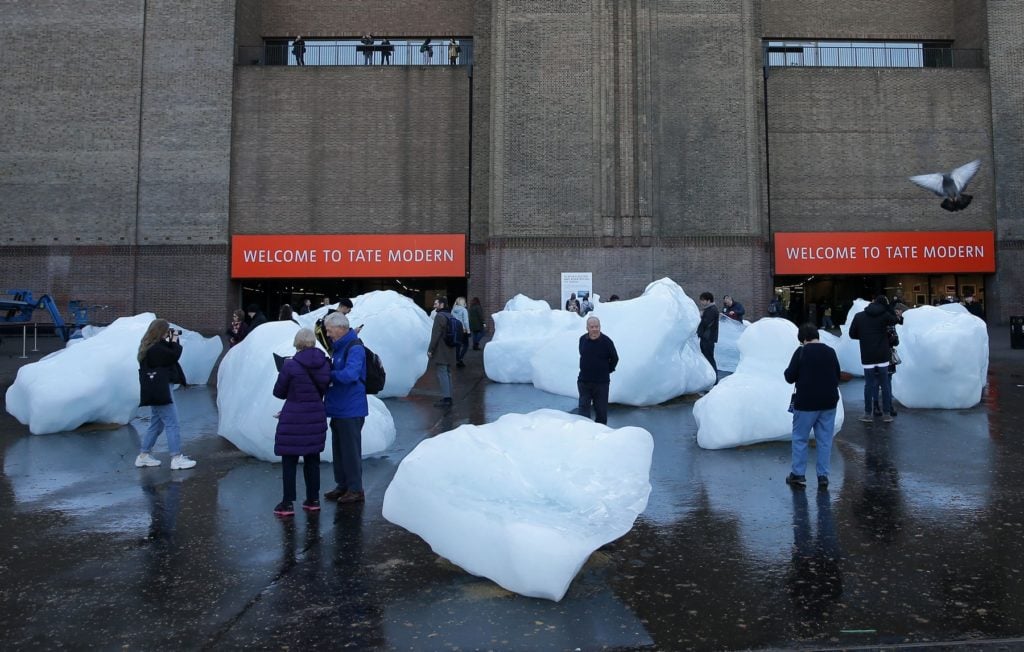Opinion
Debating the Stakes of Criticism for Indigenous Artists + Two Other Thought-Provoking Things to Read (or Watch) From Around the Art Web
A weekly digest of what's interesting in art media.

A weekly digest of what's interesting in art media.

Ben Davis

Every week, we scan the media for illuminating essays, conversations, and anything else that offers valuable new ways of thinking about art. Up this week: how a lack of criticism hurts Indigenous artists, the limits of eco-art, and an artist collective’s project about how to prevent an epidemic.
From the Spring issue of the Canadian art magazine, a hard-hitting and wide-ranging piece about the recent treatment of Indigenous artists within Canada’s museum world, which also doubles as a defense of the idea of criticism.
Garneau is an artist and teacher (he also happens to have recently designed the official silver coin commemorating Métis leader Louis Riel last year). Here, he gives the clearest articulation of a theme I’ve noticed a lot of recent critical writing feinting around: that the “ethical turn” in recent art writing (and curating) towards emphasizing undoing the wrongs of oppression within the arts risks a kind of flattening, where evaluation becomes secondary to affirming the identity of the person making the art.
Now, this can be a conservative criticism (“can’t we just get back to talking about The Art instead of all this race and gender stuff?”) So what I find powerful about Garneau’s essay is how he makes a clear case for the harm this kind of writing does to Indigenous artists:
Non-critical art writing about Indigenous art favours with recognition only those aspects of Indigenous persons that are other to the dominant. It encourages Indigenous folks to occupy the appearance of a position rather than to earn one. The refusal to engage Indigenous art and persons critically positions us as permanently in a representational rather than a dialogic mode, as transmitters rather than generators of knowledge.
I admire how Garneau takes the effort to model what he is advocating. When he begins by citing an anonymous curator quipping that the well-known Cree painter Kent Monkman was “the Norman Rockwell of Native trauma,” I inwardly cringed, expecting the article to be one of those that uses blind gossip about “things people are saying” or social media chatter to substitute for an authoritative critical reference.
But, in fact, the bulk of the essay is Garneau making the case against this kind of argumentation. He lays out the significant differences between that kind of casual sniping and the “critical care” involved in producing a real critique. He surveys Monkman’s practice as a whole, making the case for what his art has done well when it works, and then draws distinctions about why he thinks the specific artwork that is the target of the curator’s criticism—the heightened-reality depiction of colonial violence in The Scream from Monkman’s “Shame and Prejudice” series—might be troubling. Even if you don’t agree with every point, it’s a serious conversation starter of an essay.

Visitors interact with blocks of melting ice from an exhibit entitled Ice Watch created by Icelandic-Danish artist artist Olafur Eliasson and leading Greenlandic geologist Minik Rosing outside Tate Modern in central London on December 11, 2018. Photo: Daniel Leal-Olivas/AFP/Getty Images.
I’ve got a running joke in my head about how absurd all the articles with various variations of the headline “can contemporary art solve the climate crisis?” are. I mean, the answer is obviously an exasperated “no.”
Raspet, an artist himself, is essentially calling time on “eco-art” initiatives whose rhetoric depends on “raising awareness” around climate change:
[I]t’s highly unlikely that an artwork created today will reach a person that is unaware of the general problem of climate change, much less change their mind about the issue (to say nothing of their material actions). The public is well aware of the existence of climate change and the need for it to urgently “be addressed” (or is likely otherwise in denial and generally not amenable to statements coded in the format of contemporary artworks). The media already thoroughly discusses the topic on a daily basis. And indeed, the climate itself does a far better job at producing climate-related “content” and “raising awareness.” Despite the multitude of climate-related artworks at the 2019 Venice Biennale, for example, it’s undeniable that the floods in the city did far more to make tangible the perils of climate change than any contemporary art display.
In the last 48 hours, the museum world has woken up to the coronavirus crisis. Of course, “waking up” in this case means “shutting down,” in order to deny the virus opportunity to spread among crowds so as to “flatten the curve” of the outbreak.
This is a massive hardship for anyone who works in the arts, and will have cascading economic effects that I am sure everyone reading this is already aware of (and that my colleagues are working to report as we speak). If anyone doubts that it’s worth the pain though, here’s a resource: the British art group Blast Theory last year did a project with Philadelphia’s Mütter Museum, “Spit Spreads Death,” about the origins and fallout of the century-old Spanish Influenza pandemic in the City of Brotherly Love, the community hardest hit by the outbreak in the United States.
The jist of it all is that Philly’s city fathers refused to act fast to stop public gatherings for business reasons, including a September 28, 1918 Liberty Loan Parade which triggered a massive acceleration of the deadly flu.
The clip above is from a parade Blast Theory put on as a memorial to the Spanish Influenza’s fallout last year—well before it became clear just how relevant the topic of that pandemic would be. It’s useful on its own to give an emotional sense, but there are also more directly informational videos related to the project, which I’ll embed below: